| 3Dfiles | ||
| pictures | ||
| .gitignore | ||
| Readme.fr.md | ||
| Readme.md | ||
3D Printed parametric respiratory one-way-valve
Valve paramétrique adaptable à la réspiration imprimé en 3D (version francaise ici)
1 - Design
We call this one-way valve "respiratory" because it was designed to be adaptale to the low cracking-pressure requiered by breahting-related application. This is because this one-way valve was designed to integrate with our open-source 3D-printed gaz mask : distorsion/3D-printed-parametric-gaz-mask
In this repo we provide all the element of the valve (as described bellow), and the body of the valve (either 3Dfiles/owv_input_body.stl or 3Dfiles/owv_output_body.stl depending on if you want a filter at the output/input or not) that can be integrated into your project.
1.a - Membrane design
In the first design of one-way valve for ou gaz mask, we first used a very soft membrane made of thin silicone. In this design, the membrane is actually 3D printable, either out of "normal" material (preferably PETG) or out of flexible filament.
While this requieres a larger diameter to obtain the low cracking pressure, this allows the valve to automatically close without negatiev pressure, which is needed for breathing-related application as we aren't constantly breathing in an out, and there can be a second of hang durng which a softer membrane wouldn't close and would let air go the wrong way.

The valve insert shown above (located at 3Dfiles/owv_membrane_insert.stl) is a thin membrane made out of "normal" 3D printing material, with the membrane being one part with the threaded insert that screw into the body of the valve.


Here we see the second alternative which is a slightly thicker membrane (located at 3Dfiles/owv_separate_membrane.stl) made out off flexible filament (here shown in blue), with a separate rigid insert (located at 3Dfiles/owv_separate_membrane_insert.stl) that hold this membrane.
There is no large advantage from using a flexible filament, appart from a potentially lower cracking pressure obtainable from a smaller valve diameter.
1.b - Stopper
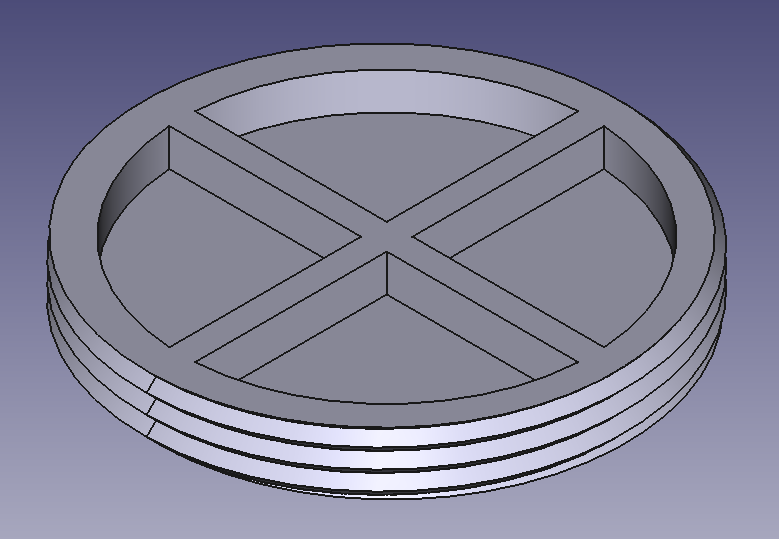
We also provide a stopper insert (located at 3Dfiles/owv_stopper.stl) which can be used to temporarily fully close the one-way valve.
2 - Assembly
Once you have printed all the requiered pieces as described in the 3D printing section, the assembly is simply done in three steps :
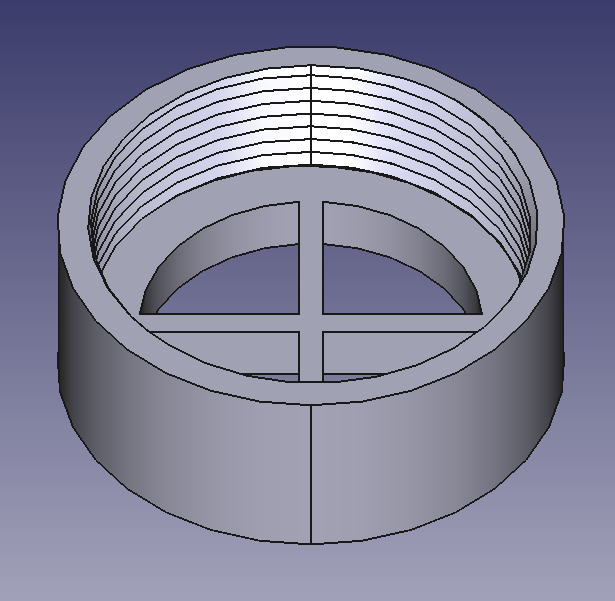
We first screw the base (located at 3Dfiles/owv_base_cap.stl) into the valve body, with the smoothest part of the insert (typically the part that was printed down) pointing toward the exit of the valve (where this face will interface with the membrane).
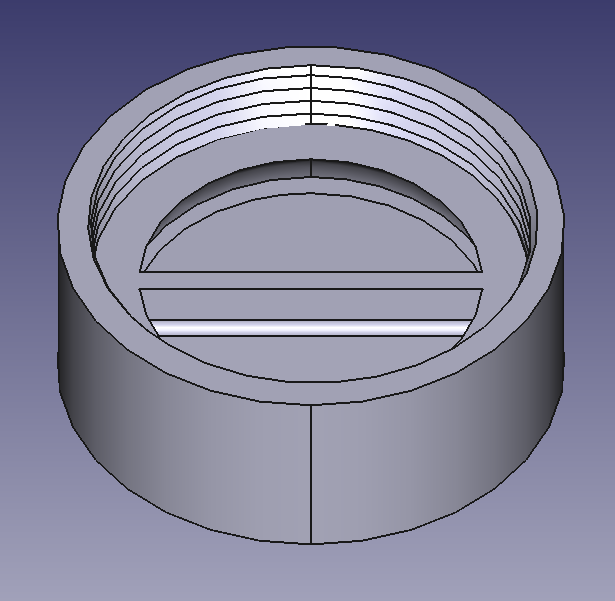
We then screw the membrane (either one of the options shown in the membrane section) so that it seals with the cap we just screwed in.
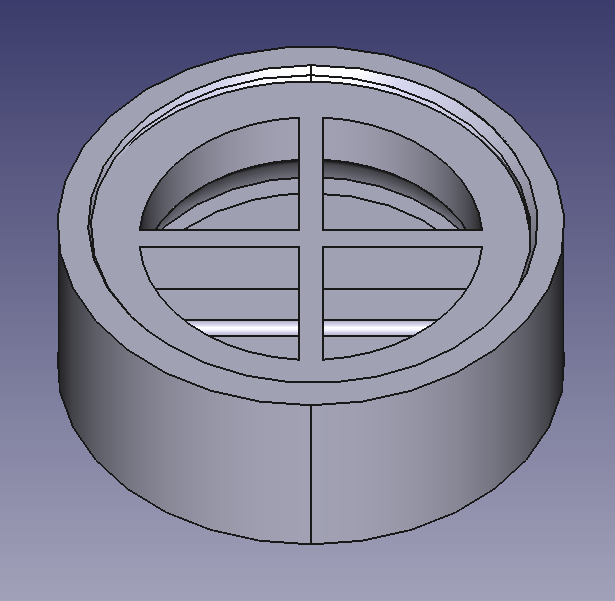
Finaly, if we want to have a filter we can now put it into the body and hold it by screwing in anther cap (located at 3Dfiles/owv_base_cap.stl). This can also be done at the other hand of the valve, where then the cap and the base (which are the same model) will be stuck together with the flter material inbetween.
3 - 3D printing

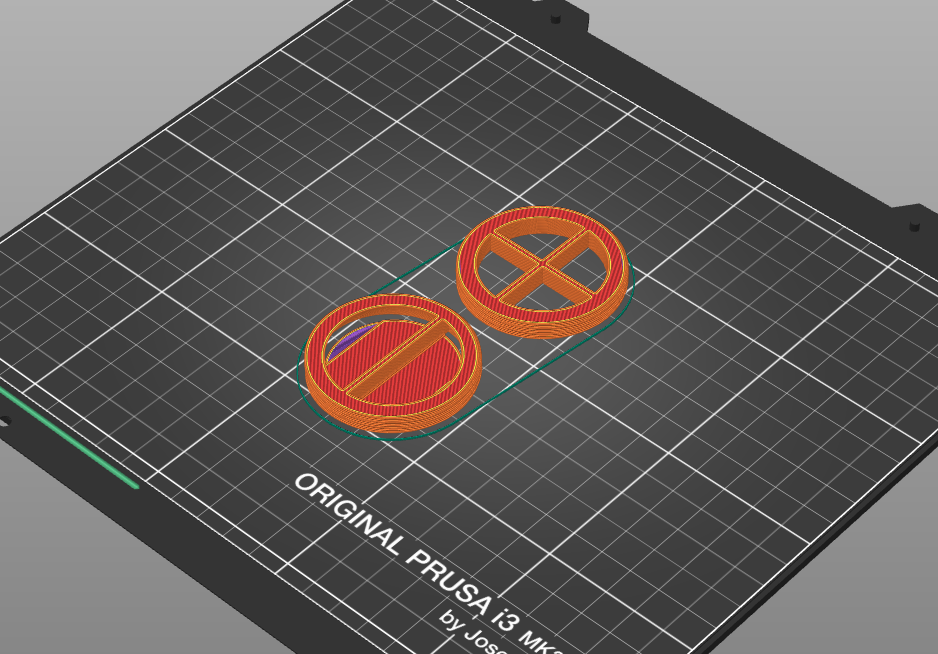
Coming soon !
4 - Parameters
If you want to changes the parameters of this design, you can edit the Freecad file 3Dfiles/one_way_valve.FCStd, which is fully parametric, with parameters present in the Spreadsheet.
If you want/need to change parameters, we would suggest you play with them and try to understand the impact of each parameters. We will only explain a small selection of important parameters that you are most likely to have to edit.
We will only describe a few parameters that you are most likely to have to change.
4.a - Structural parameters
wall_thickness : [default=2.7mm] The wall thickness accross the print (except for the strap attachment point). Can be tweeked to make the print either stronger or weaker but lighter and faster to print.
snap_fit_clearance : [default=0.09mm] The clearance between two objects that would fit togeteher with difficulty. Also impact the clearance betwen threads.
4.b - Geometrical parameters
Coming soon !

